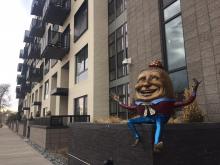 Key Trends and Assumptions
Key Trends and Assumptions

The following trends and assumptions provide a quick overview of some of the high-level issues related to Vibrant Neighborhoods. They are intended to provide a baseline understanding of emerging trends, preferences, and opportunities that may affect how Colorado Springs will grow and change in the coming years. This foundation sets up PlanCOS to provide tailored policy direction and implementation strategies. More background information can be found in Appendix A: State of the City Snapshots.
- Over the next 20 years, the average size of households is not expected to increase but our household types will continue to diversify. This includes an increase in demand for more urban and walkable neighborhoods and housing options.
- Demand for single-family housing is nonetheless expected to remain strong both in traditional stable neighborhoods and in new planned communities, assuming they have a desired combination of lifestyle, location, amenities, and access.
- The majority of our growing senior population will prefer to “age in place” within existing neighborhoods. Many will seek residential accommodations to suit their emerging needs. However, there will also be a growing demand for highly specialized senior living facilities within the context of neighborhoods.
- Maintaining housing attainability will continue to be a challenge due to natural market appreciation, increasing land and construction costs, and the impacts of regulations. Housing options are essential for an excellent quality of life, strong economy, business retention, and new business recruitment.
- Geographic disparities in life expectancy may continue to show inequitable access to opportunities residents have to live the healthiest life possible. Building a citywide culture of health that improves places where we live, learn, work, and play may help residents in all parts of the city live healthier and longer lives.
Neighborhood Typologies & Framework
For a city with the legacy, size, and complexity of Colorado Springs, there is not a one-size-fits-all approach to neighborhoods. The goal of this Plan is to give residents of a neighborhood the tools to identify and prioritize the uniquely important attributes of their neighborhoods that make them safe, livable, and desirable. That said, there are certain unifying elements that contribute to any strong neighborhood and create a sense of community. These should be encouraged throughout all neighborhoods.
Common Desired Elements
Certain qualities and elements should be widely encouraged, supported, and promoted for most neighborhoods. These include the following:
- a strong sense of identity, sense of place, and community, including distinguishing attributes and focal points (e.g. schools, parks, gathering areas, and unique places);
- an integrated mix of land uses to allow siting of residential, retail, office, recreational, and educational facilities within close proximity;
- a diversity of housing choices; and
- safe physical connections to support and encourage walkability with links to existing and future multimodal transportation systems, the city’s trails and green infrastructure network, and neighborhoods.
